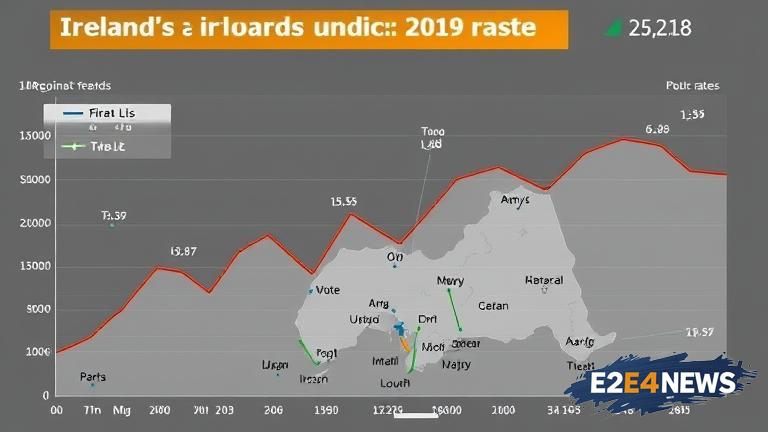The Central Statistics Office (CSO) has released the latest figures on birth rates across Ireland, providing a comprehensive overview of the country’s demographic landscape. According to the data, the areas with the highest birth rates are predominantly located in the western and midwestern regions of the country. County Longford has emerged as the area with the highest birth rate, with an average of 16.4 births per 1,000 people. This is followed closely by County Roscommon, which has a birth rate of 15.9 per 1,000 people. On the other hand, the areas with the lowest birth rates are mainly situated in the eastern and southern regions of the country. County Wicklow has the lowest birth rate, with an average of 10.4 births per 1,000 people. The data also reveals that the national average birth rate has declined slightly, from 12.9 per 1,000 people in 2020 to 12.6 per 1,000 people in 2021. This trend is consistent with the overall decline in birth rates across Europe. The CSO attributes the decline in birth rates to a combination of factors, including increased access to education and family planning resources, as well as changing social and economic conditions. The data also highlights significant regional variations in birth rates, with some areas experiencing much higher or lower rates than the national average. For instance, County Dublin has a birth rate of 12.1 per 1,000 people, which is lower than the national average. In contrast, County Mayo has a birth rate of 14.5 per 1,000 people, which is significantly higher than the national average. The CSO notes that these regional variations are influenced by a range of factors, including urbanization, education levels, and access to healthcare services. The data also reveals that the total number of births in Ireland has decreased slightly, from 61,901 in 2020 to 61,145 in 2021. This decline is consistent with the overall trend of declining birth rates across Europe. Despite this decline, the CSO notes that the total fertility rate (TFR) in Ireland remains relatively high compared to other European countries. The TFR is the average number of children a woman would have in her lifetime, and it stands at 1.83 in Ireland, which is higher than the European average of 1.55. The CSO also notes that the age profile of mothers in Ireland is changing, with more women delaying childbirth until their 30s and 40s. This trend is consistent with the overall shift towards later childbearing in many developed countries. The data also highlights the importance of immigration in shaping Ireland’s demographic landscape. According to the CSO, the number of births to non-Irish mothers has increased significantly in recent years, with 23.1% of all births in 2021 being to mothers born outside of Ireland. This trend is consistent with the overall increase in immigration to Ireland in recent years. The CSO notes that the data has significant implications for policymakers and healthcare providers, as it highlights the need for targeted interventions to support families and communities in different regions of the country. The data also underscores the importance of investing in education and family planning resources, as well as healthcare services, to support the changing needs of Ireland’s population. Overall, the CSO’s latest data provides a comprehensive overview of Ireland’s demographic trends, highlighting the complex interplay of factors that shape the country’s birth rates and population growth. As the country continues to evolve and grow, it is essential to monitor these trends closely and develop targeted policies to support the needs of families and communities across Ireland.





